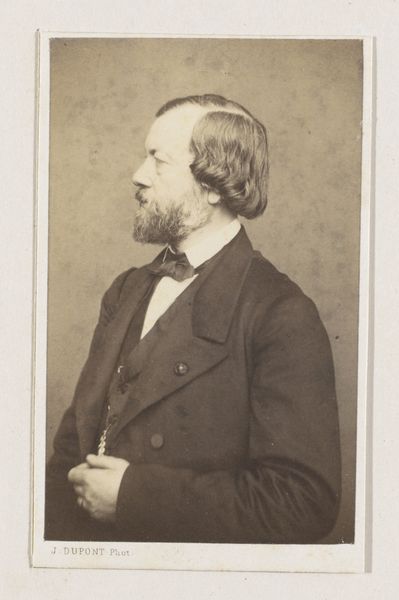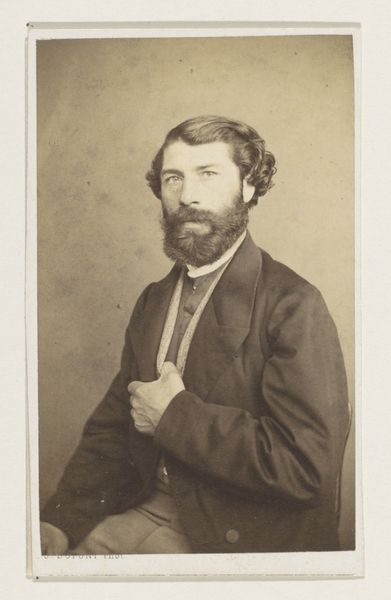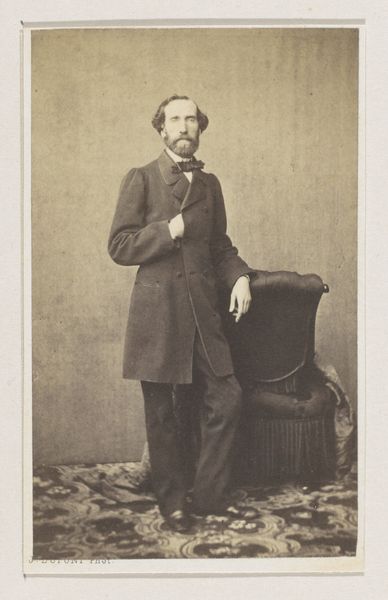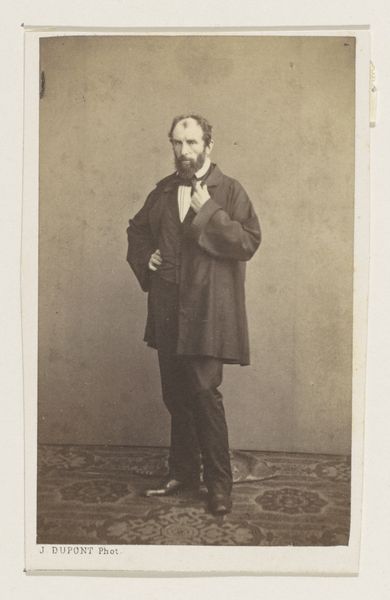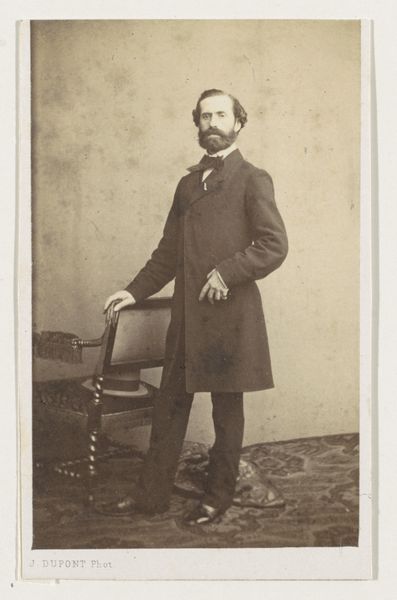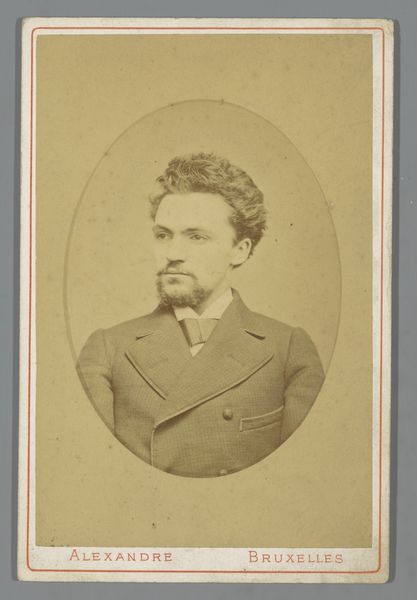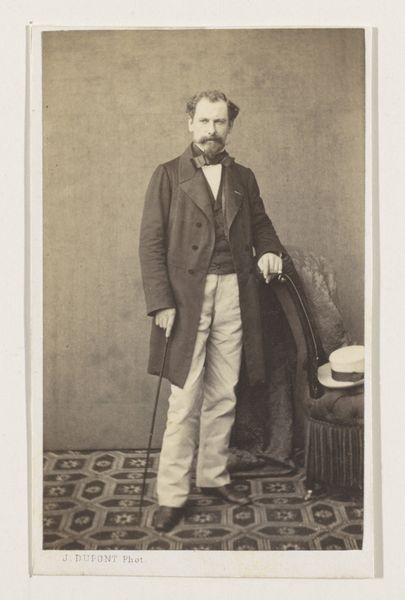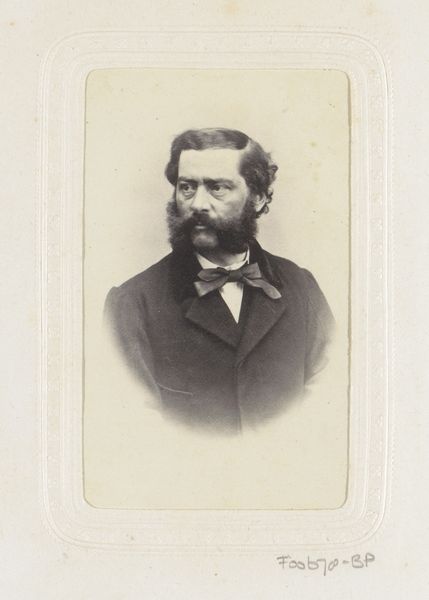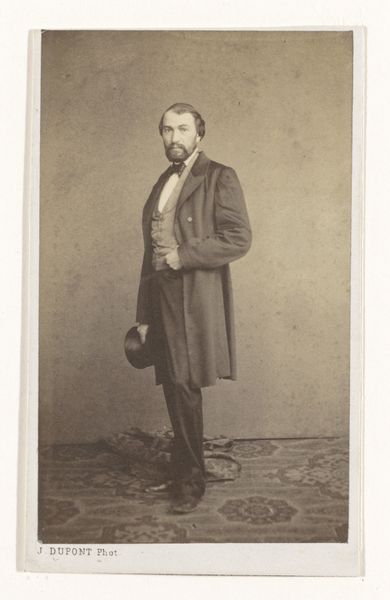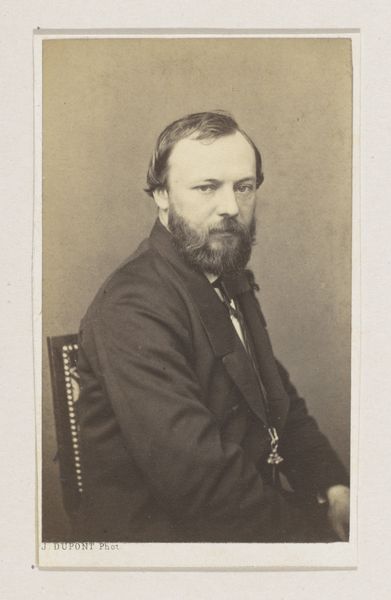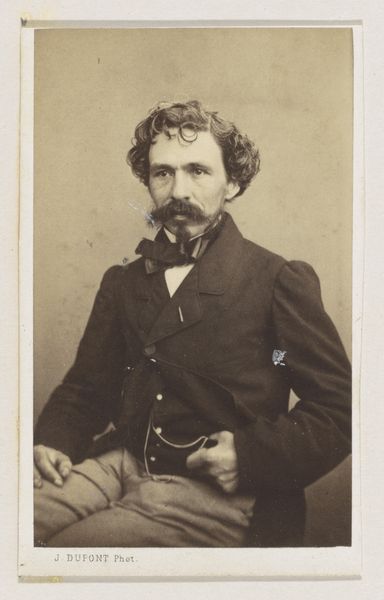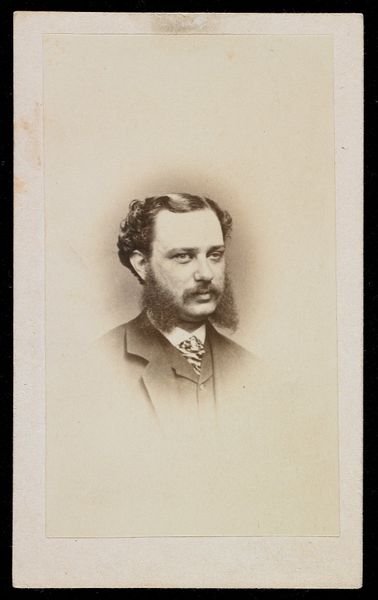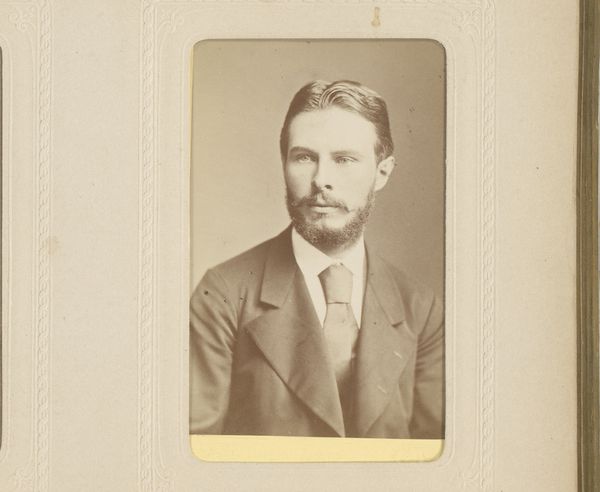
#
portrait
#
photo restoration
#
low key portrait
#
portrait image
#
caricature
#
portrait reference
#
framed image
#
portrait drawing
#
portrait art
#
fine art portrait
#
celebrity portrait
Dimensions: height 101 mm, width 62 mm
Copyright: Rijks Museum: Open Domain
Editor: This is Joseph Dupont’s “Portrait of the painter and sculptor Jules Pecher,” created around 1861. The sepia tones give it a wonderfully aged feel. It's striking how the subject's gaze is averted. What strikes you most about it? Curator: Considering its photographic origins, I immediately think of the materiality of this piece. The chemicals, the glass plate, the printing process—these all speak to the labor involved. This wasn't a quick snapshot; each photograph of that era represented a considerable investment of time, material, and skill. The sitter, too, would have to pose still for extended periods. Editor: So the process itself impacts how we view the artwork? Curator: Absolutely. Photography, even then, was about production, not just representation. Think of the rise of industrial capitalism. The mass production of images became accessible to the masses. Also, notice Pecher’s garments, the cut of his suit, the detail of his bow tie. This tells us a story about bourgeois identity and how people present themselves for the camera, within a society deeply conscious of class and status through the manufacturing of these elements. Editor: That makes me think about who could afford to have their portrait taken, versus those whose likenesses weren't documented at all. Curator: Precisely! Photography offered a new kind of accessibility, even while it maintained—and perhaps even reinforced—existing social hierarchies through consumption. The frame, too, serves as a material signifier. Was this a common size, affordable by many? Was it mass-produced? Thinking about the broader consumption of images within that specific historical context offers a crucial insight to these visual documents. Editor: I hadn't considered how the very act of creating the photograph connected it to larger economic forces. Curator: Understanding the labor and material involved allows us to unpack the photograph beyond just a simple image of a man. Hopefully, that gives you more to reflect on in your future work! Editor: It absolutely does. Thanks for pointing that out.
Comments
No comments
Be the first to comment and join the conversation on the ultimate creative platform.
